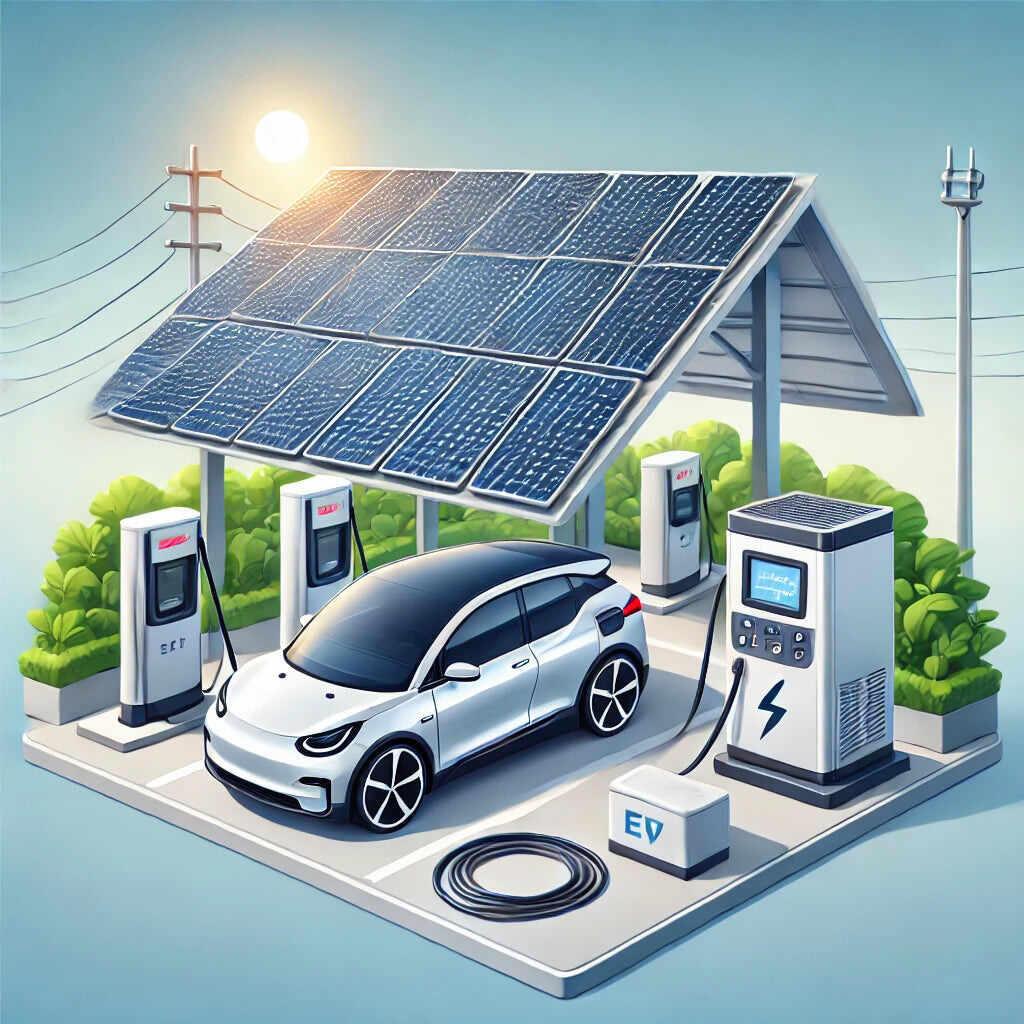Setting Up a Solar-Powered EV Charging Station

Setting Up a Solar-Powered EV Charging Station
Introduction
As electric vehicles (EVs) become more popular, the demand for efficient and sustainable charging solutions increases. One of the best ways to meet this demand is by setting up a solar-powered EV charging station. This guide will walk you through the necessary steps, equipment, and considerations for setting up your own solar-powered EV charging station.
Benefits of Solar-Powered EV Charging
- Cost Savings: Utilizing solar energy can significantly reduce electricity costs associated with charging EVs.
- Environmental Impact: Solar power reduces carbon emissions and reliance on fossil fuels.
- Energy Independence: Generate your own electricity and reduce dependence on the grid.
Essential Components
Solar Panels
Type: Monocrystalline or polycrystalline panels.
Placement: Optimal location with maximum sunlight exposure.
Inverter
Function: Converts DC (direct current) from solar panels to AC (alternating current) for the EV charger.
Battery Storage (Optional)
Stores excess energy for use during cloudy days or at night.
EV Charger
Type: Level 1 (120V) or Level 2 (240V) chargers.
Compatibility: Ensure the charger is compatible with your EV.
Mounting and Wiring
Securely mount solar panels.
Properly wire the system to ensure safety and efficiency.
Installation Steps
Site Assessment
Evaluate the location for solar panel installation. Consider roof strength, shading, and orientation.
System Design
Calculate the energy needs based on the EV usage. Design the system to match these requirements.
Permits and Regulations
Obtain necessary permits from local authorities. Ensure compliance with local building and electrical codes.
Installation
Install solar panels and secure them properly. Connect the inverter and battery storage (if applicable). Install the EV charger and connect it to the system.
Testing and Monitoring
Test the system to ensure it is functioning correctly. Set up monitoring to track energy production and usage.
Maintenance Tips
- Regular Cleaning: Keep solar panels clean to maintain efficiency.
- System Check: Regularly inspect the system for any wear and tear.
- Battery Maintenance: If using batteries, ensure they are maintained according to the manufacturer’s guidelines.
Conclusion
Setting up a solar-powered EV charging station is a sustainable and cost-effective solution for charging electric vehicles. By following the steps outlined in this guide, you can create a reliable and efficient charging system that leverages renewable energy.
For more detailed information on setting up a solar-powered EV charging station, visit our website.






